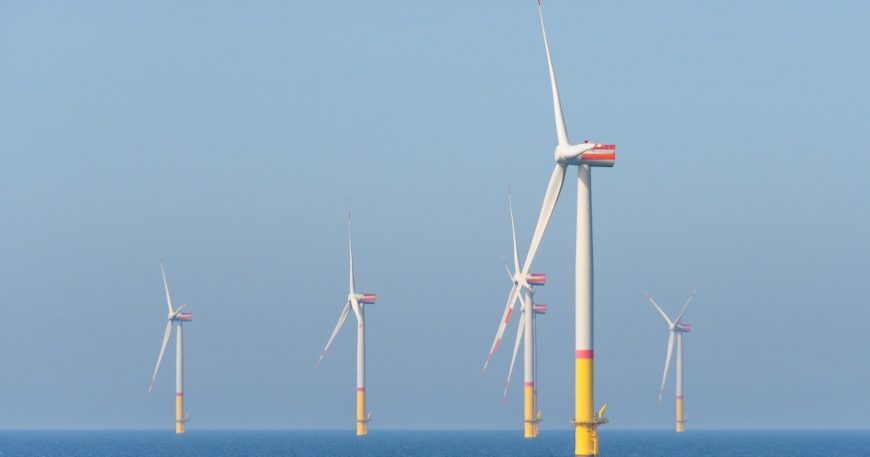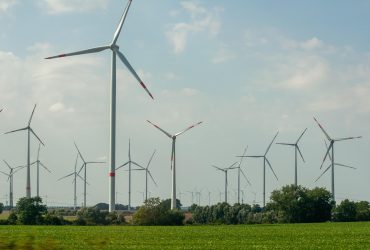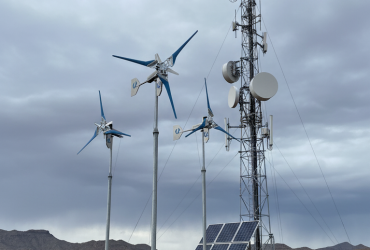
Hybrid Wind Solar Storage Solutions Explained: The Complete Guide for Industrial Applications
Industrial energy demands are driving unprecedented growth in hybrid renewable systems, with hybrid wind-solar-storage solutions representing the most cost-effective path to energy independence for large-scale operations. These integrated systems combine complementary generation patterns with intelligent storage management to deliver reliable, bankable power solutions that consistently outperform traditional diesel alternatives.
The global hybrid solar wind energy storage market shows substantial growth potential, though market size estimates vary significantly depending on scope and methodology. According to Market Research Future, the market reached $24.52 billion in 2024 and is projected to grow to $76.38 billion by 2034 at a 12.32% CAGR, while alternative assessments from Verified Market Reports show more conservative figures of $1.2 billion in 2024 forecasted to reach $4.5 billion by 2033. Most significantly for project developers, research from Grand View Research indicates the industrial segment accounts for 70.4% of all hybrid system deployments, driven by manufacturing facilities, logistics hubs, and critical infrastructure seeking to reduce operational expenses while enhancing energy security.
What Are Hybrid Wind Solar Storage Solutions? (Technical Foundation)
Hybrid wind-solar-storage systems integrate wind turbines, photovoltaic arrays, and battery storage with intelligent control systems to provide continuous, reliable power for industrial applications. These systems leverage the complementary nature of wind and solar resources, where peak wind generation typically occurs during evening and early morning hours while solar production peaks during midday periods.
The technical foundation rests on three core principles: resource complementarity, load matching, and storage optimization. Research from TUV demonstrates that wind and Solar energy resources are complementary on a diurnal basis, with peak wind times after sunset and before sunrise and peak solar times aligning with periods of lower wind resource. This complementary pattern enables more consistent power generation throughout 24-hour cycles compared to single-resource systems.
Industrial hybrid systems typically range from 10 kW to 100 kW for commercial and industrial applications, according to Market Research Future analysis. These systems offer cost-effective solutions for businesses looking to reduce operating expenses and contribute to sustainability goals. Larger systems exceeding 100 kW capacity target utility-scale applications and microgrids requiring enhanced energy security and grid independence.
Core Components of Industrial Hybrid Systems
Modern industrial hybrid installations integrate four essential subsystems to deliver reliable, bankable power solutions:
- Wind Generation Systems: Small-scale industrial wind turbines designed for modular deployment and optimized for distributed generation applications. These systems feature direct-drive generators and storm-proof designs suitable for continuous industrial operation.
- Solar Photovoltaic Arrays: Grid-tied or off-grid PV systems configured for optimal integration with wind generation and storage systems. Modern installations utilize high-efficiency modules with 20+ year performance warranties.
- Energy Storage Systems: According to the Department of Energy, battery banks are typically sized to supply electric loads for one to three days during periods of low renewable generation. Industrial applications commonly deploy substantial storage capacity relative to generation capacity.
- Control and Monitoring Systems: Intelligent dispatch controllers that optimize real-time power flow between generation sources, storage systems, and loads. Advanced systems calculate optimal combinations of wind, solar, and battery power to maximize grid stability and economic performance.
The Vattenfall Hjuleberg project in Sweden demonstrates this integration approach, combining 36 MW of wind generation with 30 MW/35 MWh of battery storage controlled by advanced algorithms that calculate optimal power dispatch in real-time. According to Vattenfall, this configuration represents the most advanced hybrid control system deployment in Europe, proving the viability of integrated operation for large-scale applications.
Why Industrial Applications Drive Hybrid System Adoption
Industrial facilities represent the fastest-growing market segment for hybrid renewable systems due to high energy demand, reliability requirements, and significant cost savings compared to diesel generation. Manufacturing operations, logistics facilities, and processing plants typically consume substantial amounts of energy annually, creating opportunities for operational expense reduction through renewable energy integration. Power reliability requirements drive industrial adoption patterns, as manufacturing facilities face substantial outage costs. Research from Vecto System indicates that the average cost of a one-second outage among industrial and Digital Economy firms is $1,477, compared to $2,107 for a three-minute outage and $7,795 for a one-hour outage. Studies from PMC show that in Germany’s manufacturing sector, the Value of Lost Load ranges from 0.48 Euro/kWh to 12.49 Euro/kWh, with the highest values found in counties with energy-intensive production.
Cost considerations further accelerate adoption, particularly for facilities dependent on diesel backup generation. According to Pinkerton analysis, storm-related outages alone cost the American economy between $20-55 billion annually, with total power outage costs to American businesses reaching approximately $150 billion per year. Industrial hybrid systems offer competitive LCOE values compared to diesel generation costs, delivering immediate operational savings.
Environmental and compliance drivers create additional adoption momentum as corporate sustainability initiatives require measurable carbon footprint reduction. Hybrid systems enable facilities to achieve substantial renewable energy penetration while maintaining operational reliability, supporting ESG reporting requirements and regulatory compliance objectives.
Key Industrial Use Cases
Manufacturing Facilities and Production Lines: Large-scale manufacturing operations with continuous power requirements benefit from hybrid systems through reduced grid dependency and enhanced power quality. Research from Bloom Energy illustrates the potential impact, noting that a car manufacturer producing 1,200 cars daily at $50,000 per vehicle would face $60 million in losses from just one day of production downtime.
Remote Industrial Sites and Mining Operations: Off-grid mining and extraction operations represent ideal applications for hybrid systems, particularly in regions with abundant wind and solar resources. These installations eliminate diesel fuel logistics costs while providing scalable power capacity for expanding operations.
Logistics Hubs and Distribution Centers: E-commerce fulfillment centers and distribution facilities require 24/7 operational availability, making hybrid systems valuable for maintaining refrigeration, automation, and security systems during grid outages.
Critical Infrastructure and Data Centers: Telecommunications facilities, data centers, and essential services require UPS-grade reliability with minimal maintenance requirements. Hybrid systems provide long-term backup power while reducing dependence on diesel generators and associated fuel logistics.
Financial Benefits and ROI Analysis for Industrial Projects
Hybrid wind-solar-storage systems deliver measurable ROI through operational expense reduction, enhanced reliability, and avoided diesel costs. According to PV Tech analysis of IRENA data, US hybrid projects combining solar PV and battery storage achieved a weighted average LCOE of $0.079/kWh, significantly below typical industrial electricity rates and diesel generation alternatives.
Capital investment requirements for industrial hybrid systems vary based on system size and configuration, with annual operational expenses typically representing a small percentage of initial investment. These costs compare favorably to diesel alternatives, particularly for facilities with substantial annual energy consumption.
Payback period analysis for typical industrial installations varies significantly depending on local energy costs, diesel dependency, and reliability requirements. Conservative estimates typically exclude potential revenue from grid services, carbon credit programs, and avoided outage costs that can significantly improve project economics.
Risk mitigation value provides additional financial benefits through enhanced energy security and reduced exposure to fuel price volatility. Industrial facilities with hybrid backup systems avoid production losses during extended outages, which can justify system investments through reliability value alone.
Cost-Benefit Considerations
|
Solution Type |
Characteristics |
Key Benefits |
Primary Considerations |
|
Hybrid System |
Integrated renewable generation with storage |
Reduced OPEX, enhanced reliability, carbon reduction |
Higher initial investment, complex system integration |
|
Diesel Gensets |
Conventional backup power |
Lower initial cost, proven technology |
High fuel costs, emissions, maintenance requirements |
|
Grid + UPS |
Traditional grid connection with backup |
Moderate cost, simple implementation |
Limited backup duration, grid dependency |
Government incentives and financing options enhance project economics in many markets. According to the European Commission, the EU Renewable Energy Financing Mechanism provides investment support for solar installations with minimum 5 MW capacity, with recent Finnish-Luxembourg cross-border projects receiving 27.5 million Euro in support funding. The World Bank has committed $1.5 billion to support India’s renewable energy transition, including $1.46 billion in IBRD lending for hybrid project development.
Technical Design Considerations for Industrial Installations
Successful industrial hybrid systems require comprehensive site assessment, load profiling, and system optimization to ensure reliable operation and economic performance. Site assessment begins with wind resource evaluation using meteorological data and on-site measurement campaigns to establish capacity factors and seasonal generation patterns.
Solar irradiance assessment utilizes satellite data and ground-based measurements to determine PV system sizing and expected annual generation. Industrial installations benefit from detailed shading analysis and structural assessments to optimize panel placement and mounting systems.
Load profiling represents the critical design input, requiring comprehensive data to characterize demand patterns, peak loads, and critical load identification. Industrial facilities typically demonstrate relatively stable load profiles with predictable demand patterns that enable accurate system sizing and storage optimization.
Grid integration considerations include utility interconnection requirements, power quality specifications, and grid code compliance. Industrial installations must meet specific harmonic distortion limits, voltage regulation requirements, and anti-islanding protection standards depending on local utility requirements.
System Sizing and Optimization Process
Professional hybrid system design follows a systematic optimization process to ensure technical performance and economic viability:
- Load Assessment and Profiling: Comprehensive analysis of existing energy consumption patterns, peak demand characteristics, and critical load identification. This phase requires detailed data collection and load forecasting for facility expansion plans.
- Resource Assessment: Wind and solar resource characterization using meteorological data, satellite irradiance maps, and site-specific measurement campaigns. Professional assessments utilize industry-standard tools for resource validation.
- Component Sizing Optimization: System sizing using various methods including iterative approaches and artificial intelligence techniques to determine optimal wind turbine capacity, PV array sizing, and component ratios for maximum economic performance, as noted in TUV research.
- Storage Capacity Determination: Battery sizing based on load profiles, renewable generation patterns, and backup duration requirements. Industrial applications typically require adequate autonomy during extended low-resource periods.
- Control System Configuration: Development of dispatch strategies, grid interconnection protocols, and monitoring system specifications to ensure reliable operation and performance validation.
Professional system design utilizes industry-standard software tools for techno-economic optimization, solar performance modeling, and wind resource assessment.
Real-World Industrial Case Studies and Performance Data
Vattenfall’s Hjuleberg project in southern Sweden represents Europe’s most advanced commercial hybrid energy installation, demonstrating the technical and economic viability of large-scale industrial applications. According to Vattenfall, the facility combines 12 wind turbines with 36 MW total capacity and a 30 MW/35 MWh battery storage system, all controlled by proprietary algorithms that optimize real-time power dispatch.
The Hjuleberg installation’s advanced control system calculates optimal combinations of wind generation and battery power in real-time, representing a significant advancement over conventional installations where battery and generation systems operate independently. According to Vattenfall, this integrated approach maximizes grid stability benefits while optimizing economic performance through intelligent dispatch strategies.
Performance validation from the Hjuleberg project demonstrates the effectiveness of hybrid system integration for industrial applications. The facility achieved commercial operation in 2024, providing real-world data on hybrid system performance in Northern European wind conditions. The intelligent control system enables the facility to provide grid services while maintaining optimal economic dispatch.
LuvSide’s WindSun hybrid modules demonstrate smaller-scale industrial applications. According to LuvSide, their systems combine wind and solar generation to achieve 28 kW nominal output in a compact installation footprint. These modular systems target distributed industrial applications with installation timeframes of 3-6 months and minimal ground preparation requirements, making them suitable for various industrial deployment scenarios.
Performance Metrics That Matter to Project Developers
System Availability and Uptime Percentages: Industrial hybrid installations typically achieve high system availability through redundant generation sources and intelligent maintenance scheduling. Multi-source generation inherently provides higher reliability than single-technology installations.
Capacity Factor Optimization: Hybrid systems demonstrate superior capacity factors compared to individual technologies, with combined wind-solar installations achieving better performance in favorable locations compared to wind-only or solar-only installations.
Storage Cycle Efficiency: Modern battery systems achieve high round-trip efficiency with substantial cycle life expectancy, providing long-term operational life under typical industrial duty cycles.
O&M Cost Optimization: Integrated hybrid systems benefit from shared maintenance infrastructure and combined service contracts, potentially reducing operational costs compared to separate wind and solar installations.
Implementation Roadmap for Industrial Projects
Industrial hybrid project development follows a structured timeline typically requiring 12-24 months from initial feasibility through commercial operation. Project development phases include feasibility assessment, design engineering, procurement and permitting, installation and commissioning, and ongoing performance optimization.
Stakeholder coordination requirements include utility interconnection approval, environmental permitting, local planning approvals, and contractor selection. Large industrial projects require coordination between multiple engineering disciplines including electrical, structural, and environmental specialists.
Risk mitigation strategies address technical, financial, and regulatory risks through comprehensive due diligence, performance guarantees, and insurance products. Professional project development includes technology risk assessment, grid integration validation, and long-term performance forecasting.
Commissioning and performance validation require systematic testing protocols to verify system performance against design specifications. Professional commissioning includes individual component testing, integrated system validation, and long-term monitoring system installation.
Step-by-Step Implementation Process
- Feasibility Assessment: Preliminary resource assessment, load analysis, and economic screening to determine project viability. This phase includes site visits, utility coordination, and preliminary permitting review.
- Design and Engineering: Detailed system design including component selection, electrical engineering, structural analysis, and control system specification. Professional design includes wind resource validation, solar irradiance modeling, and grid integration studies.
- Procurement and Permitting: Equipment procurement, utility interconnection applications, environmental permitting, and contractor selection. This phase often represents the critical path for industrial projects due to permitting complexity and equipment lead times.
- Installation and Commissioning: Physical installation, electrical interconnection, system testing, and performance validation. Professional installations include comprehensive testing protocols and performance guarantee validation.
- Performance Optimization: Long-term monitoring, maintenance scheduling, and system optimization to maximize economic performance and operational reliability throughout the system lifecycle.
Choosing the Right Technology Partners and Components
Successful industrial hybrid projects require careful vendor selection based on technical capability, financial stability, and long-term service support. Vendor evaluation criteria should prioritize experience with industrial applications, proven technology performance, and comprehensive warranty coverage.
Technology compatibility considerations include grid code compliance, communication protocols, and control system integration capabilities. Industrial installations require components certified to relevant standards including CE marking for European installations and UL listing for North American applications.
Service and support requirements include local service capabilities, spare parts availability, and remote monitoring services. Industrial facilities require reliable support availability and guaranteed response times for critical system components.
Quality and certification standards provide essential risk mitigation for industrial projects. Relevant certifications include IEC standards for wind turbines, solar modules, and battery systems. Professional installations should specify components meeting all applicable safety and performance standards.
LuvSide’s German engineering approach exemplifies the quality standards required for industrial applications, with CE-certified components designed for modular deployment and long-term reliability. The company’s focus on industrial and commercial applications demonstrates understanding of professional market requirements and service expectations.
Future Trends and Technology Developments
Market growth projections show continued expansion through 2030, with substantial growth expected across global markets. According to Future Market Insights, the global hybrid solar wind energy storage market is projected to grow at 9.8% CAGR from 2025 to 2035, with China leading market growth at 13.2% CAGR, supported by large-scale infrastructure investments and government incentives for hybrid system deployment.
Emerging storage technologies including solid-state batteries and advanced lithium chemistries promise improved performance and reduced costs for industrial applications. Next-generation storage systems target enhanced cycle life with improved round-trip efficiency, extending system economic life and improving ROI calculations.
Grid integration improvements through advanced inverter technologies and communication protocols enable enhanced grid services and revenue optimization. Industrial installations increasingly participate in demand response programs and ancillary service markets, creating additional revenue streams beyond energy cost savings.
Policy and regulatory trends support continued industrial adoption through renewable energy mandates, carbon pricing mechanisms, and grid modernization initiatives. According to PV Magazine India analysis, policies like the EU’s REPowerEU plan and India’s National Wind-Solar Hybrid Policy create favorable regulatory frameworks for continued market expansion.
FAQ Section
- What is the typical payback period for industrial hybrid systems?
Industrial hybrid installations typically achieve payback periods ranging from 8-12 years depending on local energy costs, diesel dependency, and reliability requirements. Projects in high-cost energy markets or diesel-dependent operations often achieve shorter payback periods through immediate operational savings. - How do hybrid systems perform during extended periods of low renewable resource?
Industrial hybrid systems with properly sized battery storage maintain critical loads for extended periods during low resource conditions, with backup generators providing additional coverage if required. System design includes comprehensive resource modeling to ensure adequate capacity during seasonal low-generation periods. - What are the maintenance requirements for industrial hybrid installations?Professional hybrid systems require regular preventive maintenance including wind turbine inspection, solar panel cleaning, battery system testing, and control system updates. Maintenance requirements are generally more predictable than diesel generator alternatives.
- How do you determine optimal storage capacity for industrial applications?
Storage sizing requires detailed load analysis, renewable generation modeling, and backup duration requirements assessment. Professional designs balance battery costs with reliability benefits to achieve optimal economic performance. - What financing options are available for large-scale industrial projects?Industrial hybrid projects access various financing structures including power purchase agreements, equipment leasing, tax equity partnerships, and traditional project finance. Government incentive programs and green bonds provide additional financing support in many markets.
Related Comntent
Wind turbines are subject to strict regulations in the EU to ensure their safe operation even during power outages. An uninterruptible power supply (UPS) is...
Wind turbines are subject to strict regulations in the EU to ensure their safe operation even during power outages. An uninterruptible power supply (UPS) is...

